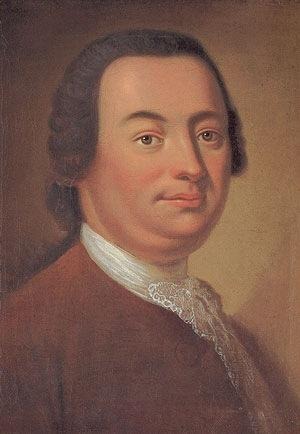Johann Christoph Friedrich Bach
1732. 6. 21 라이프치히~ 1795. 1. 26 프로이센 뷔케부르크.
요한 제바스티안 바흐와 안나 마크달레나 바흐 사이에 난 아들 중 가장 장수한 작곡가.
요한 크리스토프 프리드리히 바흐는 아버지 J. S. 바흐의 사촌 요한 엘리아스 바흐에게 배웠고, 1750년 뷔케부크의 빌헬름 백작 실내악단에서 연주자로 지내다가 1758년경 그곳의 악장이 되었다. 지속적으로 음악 활동을 했고 작품도 다방면에 걸쳐 있다. 바로크 후기 양식에서 전기 고전주의 양식으로 전환하는 데 크게 이바지한 그의 작품은 인기가 좋았지만 시대를 앞서간 것은 아니었고 다만 시대의 흐름을 따라가는 데 그쳤다.
후기 교향곡들 정도가 하이든 교향곡과 양식상 유사함을 보일 뿐이다. 모테트, 오라토리오(시인 요한 고트프리트 폰 헤르더가 가사를 씀), 피아노 소나타, 실내 칸타타, 실내악 등도 작곡했다.
Born in Leipzig in the Electorate of Saxony, he was taught music by his father, and also tutored by his distant cousin Johann Elias Bach (de). He studied at the St. Thomas School, and some believe he studied law at the university there, but there is no record of that. In 1750, William, Count of Schaumburg-Lippe appointed Johann Christoph harpsichordist at Bückeburg, and in 1759, he became concertmaster. While there, Bach collaborated with Johann Gottfried Herder, who provided the texts
for six vocal works; the music survives for only four of these.
================= Symphony No. 1, HW I =====================
'♣ 음악 감상실 ♣ > * 음악가 별' 카테고리의 다른 글
| [오스트리아] Carl Ditters von Dittersdorf[작위명:디터스 폰 디터스도르프] (0) | 2015.07.05 |
|---|---|
| [이탈리아]조반니 파이시엘로 (0) | 2015.04.06 |
| František Xaver Dušek (0) | 2015.03.25 |
| [스웨덴]프란츠 베어발트(Franz Berwald) (0) | 2015.01.12 |
| [체코-슈베르트의 친구]Jan Václav Hugo Voříšek (0) | 2015.01.11 |
